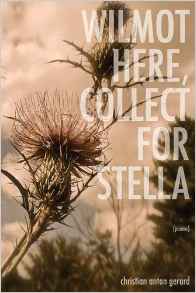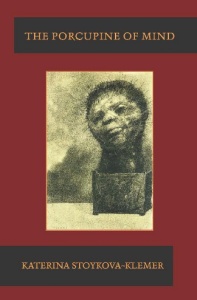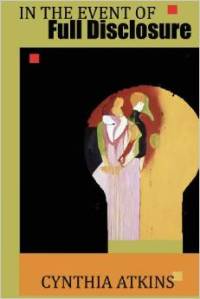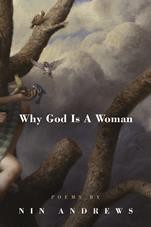 Christian Anton Gerard’s first poetry collection, Wilmot Here, Collect for Stella (CW Books 2014), is a dark and tender sequence of memories of a man whose feet of clay keep him grounded, even as he dreams of being better than he is:
Christian Anton Gerard’s first poetry collection, Wilmot Here, Collect for Stella (CW Books 2014), is a dark and tender sequence of memories of a man whose feet of clay keep him grounded, even as he dreams of being better than he is:
My genes are four percent Neanderthal.
He has fallen in love with Stella, and the story of their lifetime together draws from their own ancestries and the strangely hard and poignant details of their own era, the way the cover image of thistles in winter is so beautiful.
Wilmot Here, Collect for Stella; or
Remember that Chicago Symphony?
I dressed to the height of human being. My suit,
Remember? Silk cocooning what you laughed at
when I danced for you before that shower?
Dressing for that night was dressing for you,
for the bow string, an act of surrender, like a Sunday
morning leans into a Bloody Mary. Remember?
I leaned into your crossed legs, fingers watching…
Christian Anton Gerard answers a few questions about the writing of his book.
What was the inspiration for this book?
When did you know this particular collection of poems was a book?
I knew this particular collection was a book in the second year of my MFA at Old Dominion University. Then, though, the characters were Peggy and Jackson Bellhorn. I didn’t know them as well as I could or should have. I needed to read more. I needed to understand poetry’s tradition and vital communal aspect to really make the collection cohere, which is what happened in the five years between the project’s beginning and its publication. I knew early on I was committed to poetry as a conversational medium, an act of communication, and that, I believe, is how I knew I would not stop exploring this poetic dimension until the project was complete.
How did you create the title?
The title was created out of the collection as a whole. I had to step back and figure out what was really happening. I had written so many of the ‘Wilmot Here, Collect For Stella; Or” poems and I realized that this was a story taking place in the present and the past. For me, Wilmot is alone from beginning to end and he is making collect call after collect call (yes, one must remember collect telephone calls for this aspect to make sense) to his gone wife who never answers. Wilmot’s attempts to reckon himself are too late, but in the act of trying there’s a desperation and desire that I found at love’s core in my thinking about how love operates in the past and present. Essentially, for me, the poems were made from Wilmot’s desire to be what he couldn’t have been, but wanted so desperately to be, which is why he made those collect calls and remembered all he remembered about his relationship with Stella. Thus, Wilmot Here, Collect for Stella felt like the emotional tone and actual impetus for the collection’s conception.
What was the most challenging aspect of putting the collection together?
The most challenging aspect of putting the collection together was resisting my own impulse to chronologically order the poems, while still honoring my love for poetry’s narrative tradition. The other most difficult aspect of the collection was the dialogue. Dialogue was (and still is for me) a difficult craft component to organically make and make work. This story needed, I felt, to be told as it worked in Wilmot’s mind, and the mind often resists chronology in its initial impulses to emotion. Chronology felt too rational for this man because love is so often irrational (as are the actions it prompts). Imagining Wilmot remember his conversations as he relayed them to his gone wife helped me understand how dialogue might happen in the mind and how it might be made and presented chronologically, or dare I say, anachronistically?
How did you choose your opening and closing poems?
I trusted my readers on this one. Wilmot and Stella have issues, as we all do, but I had to find a way to deploy those issues. While Wilmot does most of the collection’s talking, for me, this is really a story about Stella’s strength. As the story happens, Stella becomes, I hope, the strong woman who has lines in the sand that Wimot crossed, or was too unaware to even know existed. For me, Wilmot failed himself and in doing so failed Stella because he couldn’t see past himself. Stella, though, Stella did what she could. She was honest. She was open. She tried until there was no more trying and then she did for herself, which is a personal victory. For me, Stella knew that love wasn’t enough to make the relationship last. Work and compromise was essential, and Wilmot didn’t know how to do that work for himself, and thus, his marriage. My readers pointed out that opening the collection with Stella’s anxiety and honesty would foreground her desires and her disposition. I believe this was the best choice. My readers also noted that ending with Wilmot alone in the snow would help demonstrate his emotional change (despite it being too late for this particular relationship), while still focusing on Stella’s move for her own personal happiness and freedom.







